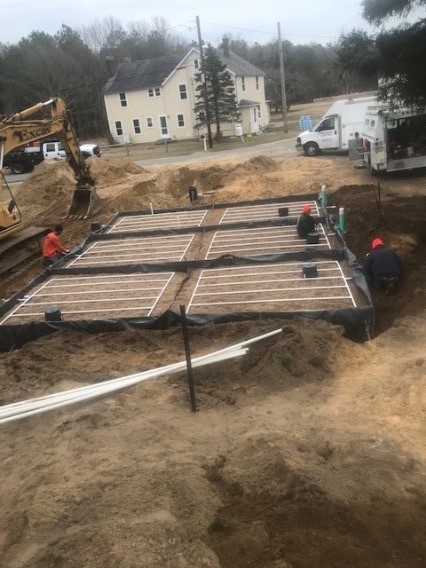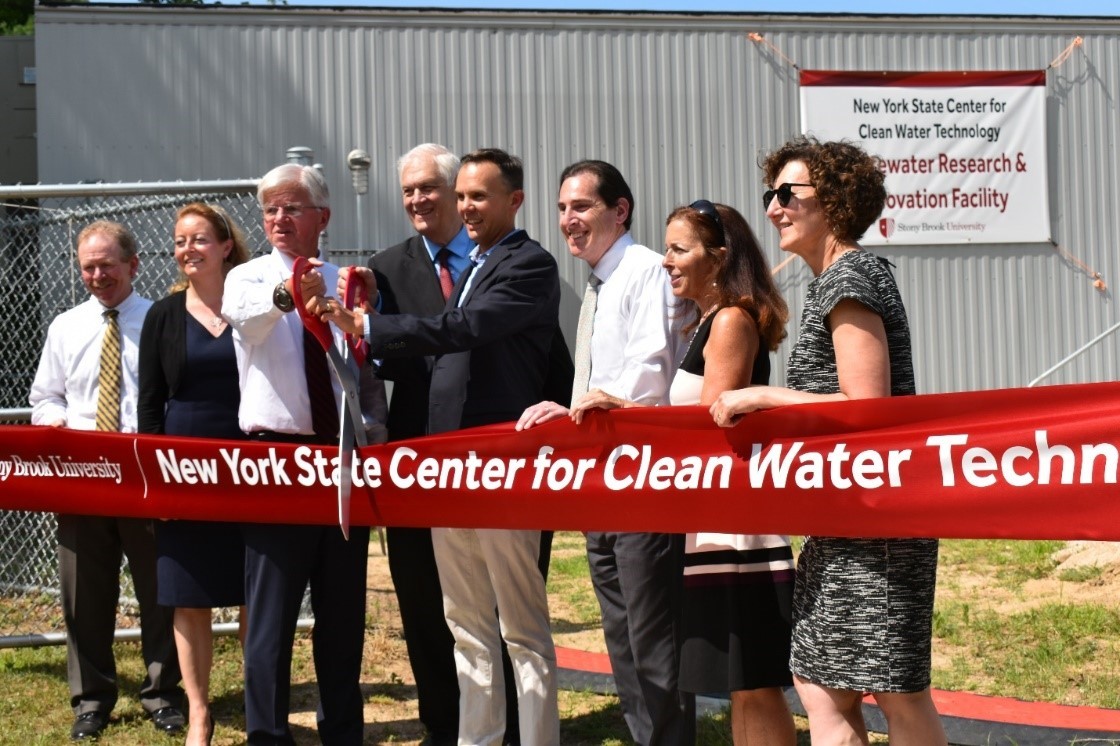Long Island Nitrogen Action Plan - Newsletter
The New York State Department of Environmental Conservation sent this bulletin on 02/28/2020 09:00 AM EST |
| DEC Delivers - Information to keep you connected and informed from the NYS Department of Environmental Conservation |
| Share or view as a web page || Update preferences or unsubscribe |
Long Island Nitrogen Action Plan (LINAP) - February Newsletter
|
|
In this month's issue we highlight the initiatives lead by the team at the NYS Center for Clean Water Technology (CCWT). Launched in 2015, CCWT seeks to position Long Island as a leading center for innovation and development in water treatment technology. CCWT’s thrust is to research, develop and commercialize cost effective solutions for removing nitrogen and other contaminants of emerging concern from both drinking water and onsite wastewater.
Nitrogen Removing BiofiltersThe Center for Clean Water Technology (CCWT) is continuing to develop non-proprietary, onsite wastewater treatment systems for residential and commercial use that reduce nitrogen to below 10 mg/L. The CCWT currently has three variations of Nitrogen Removing Biofilters (NRBs) that are adaptable to site constraints, depth to groundwater and degree of desired nitrogen removal. The basic components are an aerobic sand filter for the conversion of ammonia to nitrates followed by an anoxic (oxygen-free) environment for denitrifying bacteria to convert nitrates to nitrogen gas that is then safely released to the atmosphere. As of January 2020, CCWT has installed 8 NRBs across Suffolk County as part of the experimental phase of Suffolk County’s Article 19 performance evaluation program which established a framework for the Department of Health Services to evaluate, approve, register, oversee and facilitate the use of innovative and alternative onsite wastewater treatment systems that, at a minimum, are designed to reduce total nitrogen in treated effluent to 19 mg/l. All CCWT systems are performing at levels better than those established by Article 19.
NRB test cells to determine optimum dosing rates. Photo Credit: CCWT New York State Wastewater Research and Innovation Facility (WRIF)There are several experiments now being run by the Center’s researchers within the WRIF, which was officially opened in Summer 2019. Raw wastewater from the Suffolk County Department of Public Works' sewage pumping station #10 is being used to test concepts of design and determine empirical relationships that will ultimately result in a guidance document for the design, installation and maintenance of NRBs. Experiments have been ongoing since mid-2019 to prove concepts and theories for the next generation of NRBs, with initial results producing a total nitrogen concentration of approximately 2 mg/liter at very low flows. The system is now being tested at various flows to establish the optimum loading rate that will be used for the development of the full-scale prototype mentioned above. Experiments are also concluding on the design of nitrate polishing filters using lignocellulose (woodchips, saw dust, mulch) as a carbon source. A column experiment is also being constructed to test the removal of contaminants of emerging concern using variations of the NRB process technology. As a service to the industry of advanced onsite wastewater treatment systems, the Center has progressed discussions with 2 companies who wish to fine-tune the operational parameters for obtaining 19 mg/liter per Article 19 requirements. The systems are planned to be installed at an area adjacent to the WRIF and will use raw wastewater to determine performance adjustments.
Ribbon Cutting Ceremony for WRIF. Photo Credit: CCWT Next Generation Nitrogen Removing Biofilters (NRB)CCWT has received provisional patents for 2 of 3 unique NRBs that are designed to decrease the footprint, and therefore the cost, of the first generation NRBs discussed above. Experiments are now being run at the Center's Wastewater Research and Innovation Facility (WRIF) to prove the concept of design. A full-scale pre-cast concrete prototype of one of the systems is scheduled to be installed in mid-2020 for additional testing and evaluation. The prototype will be installed in an area adjacent to the WRIF. Shinnecock Indian Nation Septic System UpgradesCCWT has been consulting with the U.S. Indian Health Services to install 10 to 15 unlined NRBs at the reservation in Southampton. The first grouping of upgrades is scheduled to be bid in 2020. To sign up for the LINAP Newsletter, visit the LINAP webpage or click here. |


